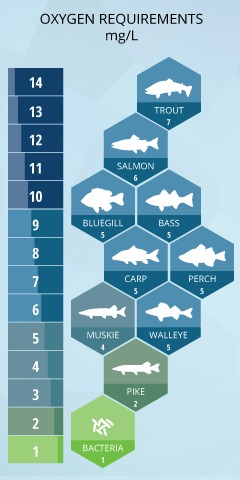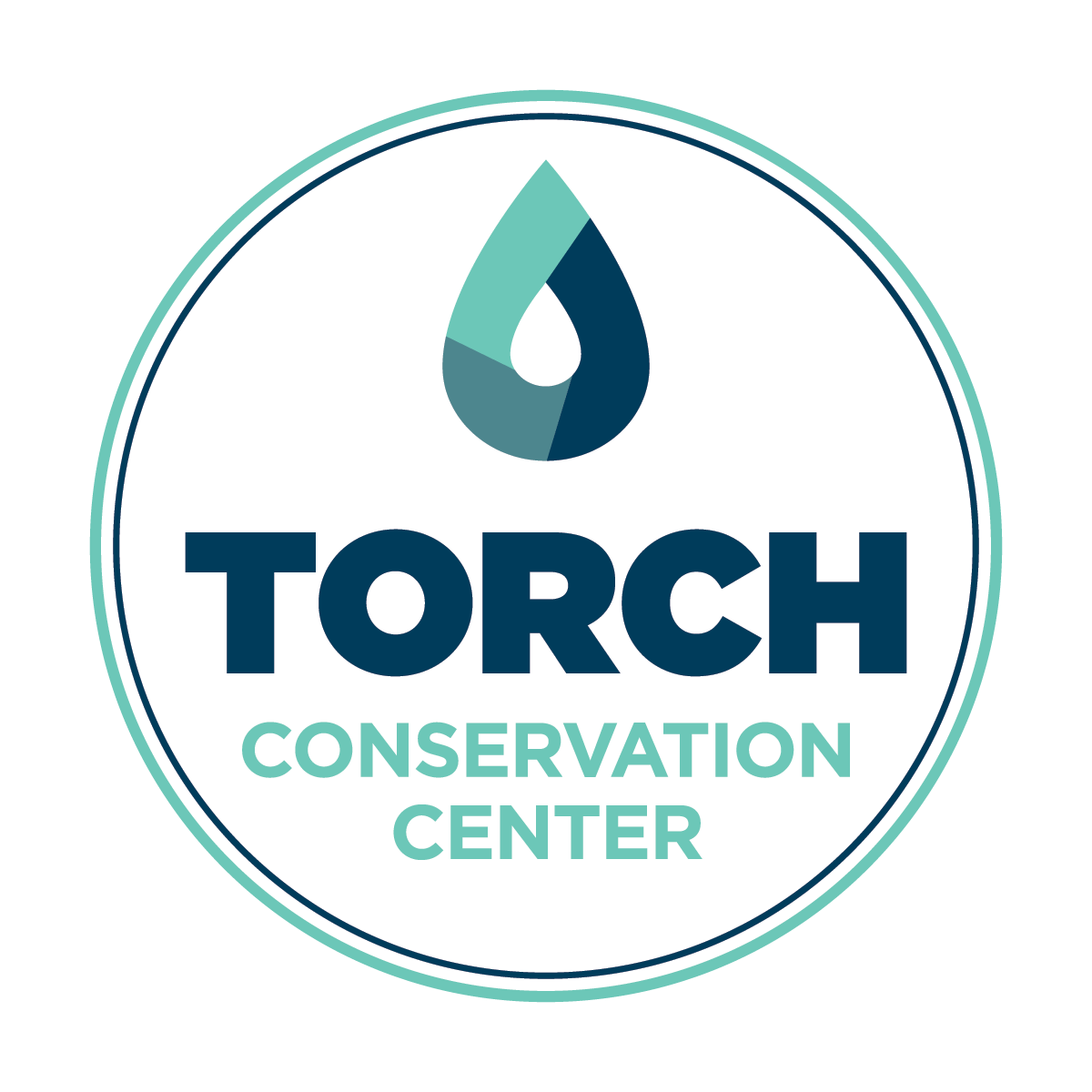
Dissolved Oxygen
Fish and other critters living in the water need dissolved oxygen (DO) to breathe.
Key Facts
- Dissolved oxygen (DO) is simply oxygen molecules mixed with water molecules.
- Dissolved oxygen is NOT the same as the oxygen bonded together with hydrogen that forms a water molecule.
- The amount of dissolved oxygen in the water determines which kinds of fish and other organisms live in the lake.
Did you know?
Dissolved oxygen gets into the water of a lake or stream when the wind mixes with air at the water surface or when aquatic plants release it through a process called photosynthesis.
Several factors impact the amount of dissolved oxygen in the water:
- If the water is murky, sunlight cannot penetrate and aquatic plants cannot produce oxygen.
- When plants decompose, the bacteria they produce also uses up the dissolved oxygen.
- Water temperature also affects the amount of dissolved oxygen in the water. Warm water holds less dissolved oxygen than cold water.
Coldwater fish like salmon and trout need up to 11 mg/L of DO. In 2005, Torch Lake DO exceeded 11 mg/L.
If DO drops too low, fish can’t breathe and they die.
Dissolved oxygen in Torch Lake is high throughout the year. There have been no reports of fish kills in Torch Lake.
Minimum DO requirements for Freshwater Fish

Image Source: Fondriest Environmental, Inc.
Show
You Care
We know you want to enjoy the lake for many years (and generations) to come. So, we’ve put together a list of simple steps you can take to reduce the nutrients, sediments and toxins flowing into the lake and its streams.
Restore the shore.
Maintain a greenbelt buffer with trees along the shore. Keeping water cool near the shore provides shade, more oxygen and habitat for native species: spawning fish, minnows, and crayfish.
WATERpedia: the “One-Stop Shop” for Water Science A-Z
A-E
F-M
N-S
T-Z
Don't just wish that Torch Lake will stay blue.
Choose a water-friendly lifestyle - make a difference!
